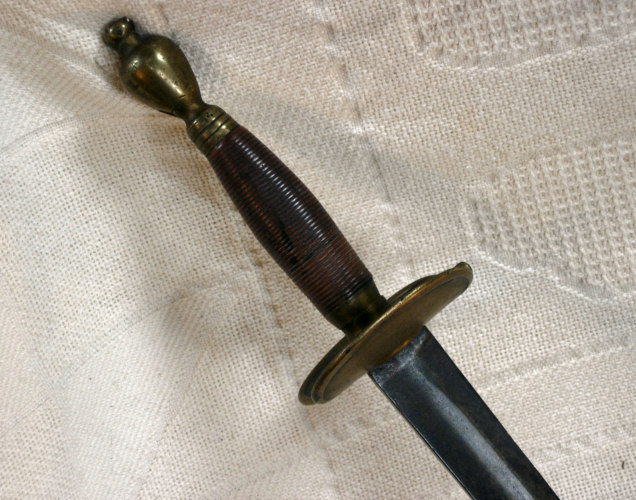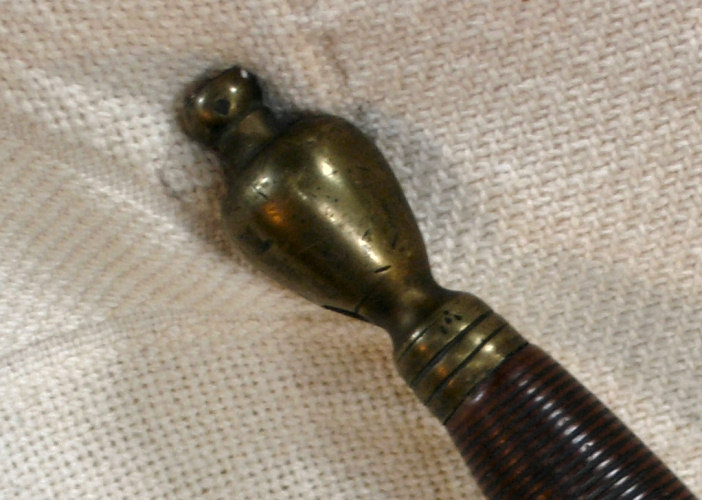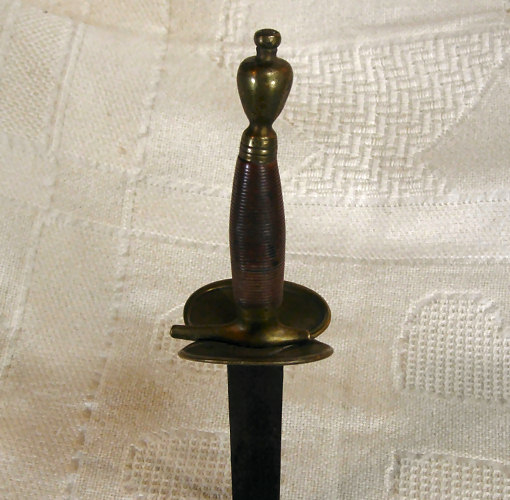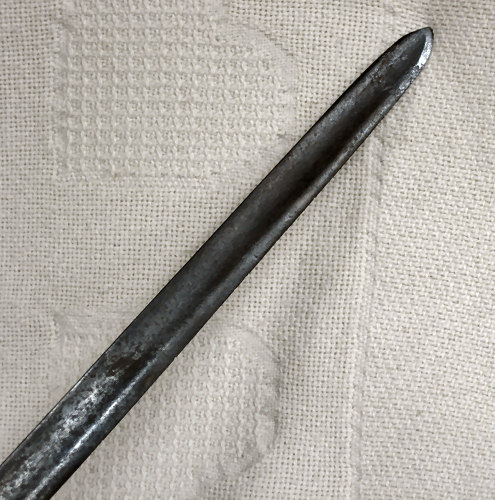

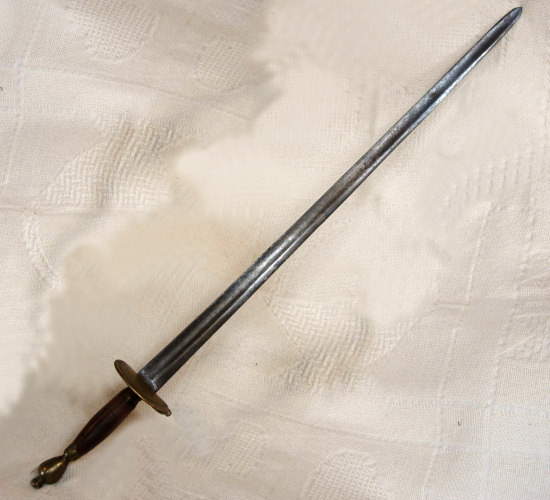
| The item exhibited here is commonly called a sword. The more accurate name is hanger. A hanger was a sword with a short blade that measured about two feet in length on average. The hanger could have a single blade edge or, in some cases, a double blade edge. A hanger with a single blade edge might be either triangular, elliptical or diamond shaped in cross-section. Regardless of the cross-section shape, a hanger possessing a single blade edge would have been stronger than a double edged one. The hanger's hilt (i.e. the portion which was grasped by the hand) generally consisted of a double-lobed (variously, clam-shell shaped) or heart-shaped brass counterguard, connected to an egg-shaped pommel by a knuckle guard. The grip was often carved from wood, and bound in metallic thread or foil. The hanger exhibited here is of the 1760 pattern. The date of 1760 refers to the year in which the design was introduced for use in the British Army. The straight blade measures twenty-five and one-half inches in length, from the clam-shell counterguard to the tip. The knuckle guard, including the bow and quillon, was removed ~ simply cut off ~ by an owner who probably found it obstructive. Cutting off the knuckle guard was a more common practice than one might assume. In 1796 a new pattern, without the knuckle guard, was introduced and standardized. Owners of the older sword, who still used it, sometimes cut off the knuckle guard to make it conform to the new standard. This example shows the bare wood of the grasp exposed. It is ribbed, without the original silver foil covering that would have encased it. Wear and tear on the edge of the crack in the wood grasp reveals use long after the crack had formed. The seller of this sword noted that swords of this type were found throughout New England during the 1950s and 60s, having been stashed away in attics for many years. They were commonly referred to as corn crib swords, alluding to many of them being found in out-buildings. |
